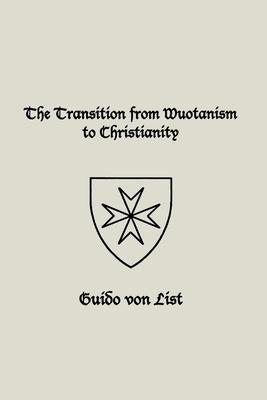In this volume Guido von List lays out the Armanic view of the transition in Germanic culture of antiquity and the Middle Ages from the native expression of Armanen wisdom called Wuotanism to the Christian religion. List clarifies his concept that there was originally one universal religion, called by him Wihinei, and that Armanism is the esoteric side of the historical Wuotanic expression. The Armanen, according to List, guided and partnered with Christian clerics and thereby infused Armanic ideology into the practices of medieval Christianity. In the beginning of the Christianization process the Armanen merely expressed their concepts and practices in new, Christianized, forms. The transition was a smooth such that Armanism was merely reconfigured to appear the be Christian, but it retained its perennial essence. What appeared to be the demise of heathen culture was merely a cyclical transition. To List Armanism is indestructible, so he does not lament the apparent demise of Wuotanism. It was not destroyed, it just changed its outer form. In later times this transition was progressively corrupted, which is the underlying rationale for the need for the re-emergence of organized Armanism as a cultural corrective measure. This book is a key text for the understanding of List's philosophy in action. The translation is a nuanced expression of List's highly poetic prose which defies mechanical efforts at translation. Notes to explain difficult references are provided as well as a glossary of esoteric Listian terms.

In this volume Guido von List lays out the Armanic view of the transition in Germanic culture of antiquity and the Middle Ages from the native expression of Armanen wisdom called Wuotanism to the Christian religion. List clarifies his concept that there was originally one universal religion, called by him Wihinei, and that Armanism is the esoteric side of the historical Wuotanic expression. The Armanen, according to List, guided and partnered with Christian clerics and thereby infused Armanic ideology into the practices of medieval Christianity. In the beginning of the Christianization process the Armanen merely expressed their concepts and practices in new, Christianized, forms. The transition was a smooth such that Armanism was merely reconfigured to appear the be Christian, but it retained its perennial essence. What appeared to be the demise of heathen culture was merely a cyclical transition. To List Armanism is indestructible, so he does not lament the apparent demise of Wuotanism. It was not destroyed, it just changed its outer form. In later times this transition was progressively corrupted, which is the underlying rationale for the need for the re-emergence of organized Armanism as a cultural corrective measure. This book is a key text for the understanding of List's philosophy in action. The translation is a nuanced expression of List's highly poetic prose which defies mechanical efforts at translation. Notes to explain difficult references are provided as well as a glossary of esoteric Listian terms.